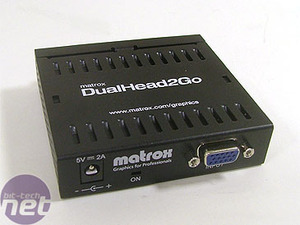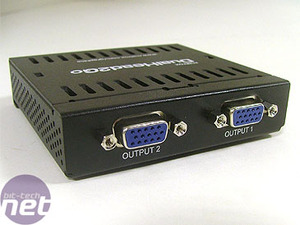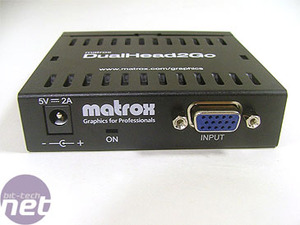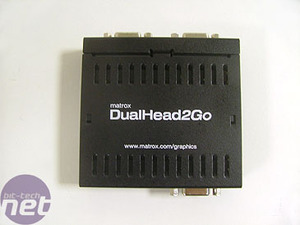
Matrox DualHead2Go
Since TFTs started to become fairly cheap items a couple of years ago, the popularity of multi-monitor setups has increased exponentially. There are now many people who run two or three monitors off their main desktop rig, thanks to the increase of graphics cards sporting two outputs on the back of the card.Anybody who has ever used a dual monitor setup knows how hard it is to go back to a single monitor, because things are just so much easier with double the amount of screen real estate.
In recent months, the price of high resolution TFTs has also started to plummet, with 1900x1200 displays from Dell coming in at £700 (or thereabouts). Two of these are absolutely awesome, if slightly neck-strain-inducing.
Of course, there are people that swing the other way and, rather than using a high-powered desktop with multi-monitors for their main machine, use a laptop. The advantage of using a laptop is that you can take all your data with you, anywhere you go - without having to copy things across, synchronise key files etc. The convenience of having all your data to hand, and being able to work wherever you can find a seat, is often crucial. I'm one of these people - all my work is done from my Apple PowerBook.
Most laptops now have VGA or DVI outputs for connecting to an external TFT, meaning you can at least have some extra work space other than just the laptop display. You can also use the laptop as a secondary display, but this can get awkward in terms of desk space.




For example, you can connect up two 17" TFTs and have a 2560x1024 dual screen setup. You need to configure your laptop to output to a single monitor at that resolution, plug in the Matrox device, and it splits the single monitor signal into two separate signals to go to the displays using magic. Well, ok, not magic, but some clever electronics.

MSI MPG Velox 100R Chassis Review
October 14 2021 | 15:04








Want to comment? Please log in.